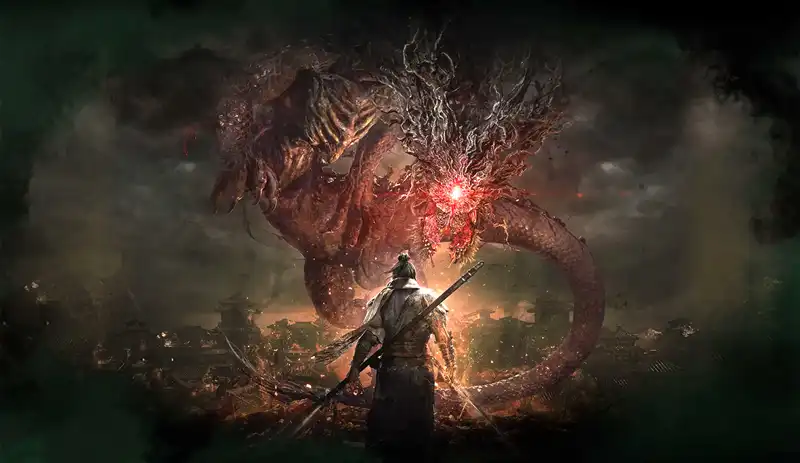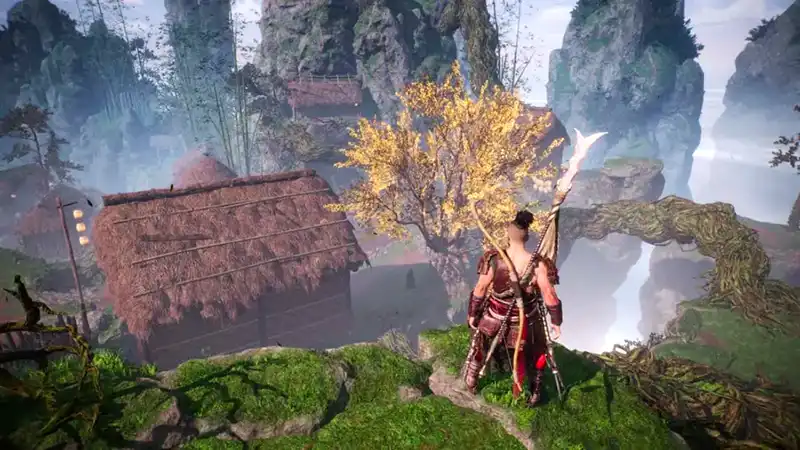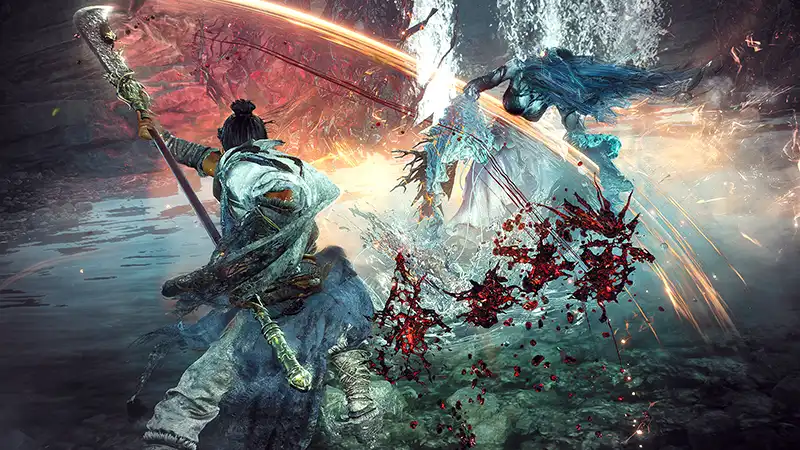You can also be interested in these:
- How to play retro games on my PC
- How does Metaverse leverage the gaming industry?
- Playing PS3 games on PS5: Backwards compatibility
- Do we need a gaming chair with LED lights?
Team Ninja has consistently demonstrated its ability to adapt and build upon the Dark Souls concept established by FromSoftware, adding unique twists and elements to create fresh and engaging experiences. This is evident in their successful RPGs, NiOh and NiOh 2, which both offer deep lore and gameplay innovations that invigorate an increasingly crowded genre.
A brutal difficulty
Wo Long: Fallen Dynasty takes inspiration from Sekiro: Shadows Die Twice. The game specifically emulates Sekiro’s high-stakes combat and focus on parrying and posture mechanics, while also retaining Team Ninja’s signature approach to game design. This includes crafting a deep, narrative-driven story, introducing a plethora of secondary characters, and utilizing shorter, non-interconnected levels to diversify settings and showcase epic battles in each stage.

Wo Long: Fallen Dynasty strives to establish its own identity within the genre by combining various elements from its inspirations and introducing original mechanics and concepts. The game’s difficulty and level design are heavily influenced by its predecessors, but Wo Long also ventures into uncharted territory by incorporating unique features that set it apart from other titles.
A key aspect of Wo Long is its emphasis on tactical and strategic thinking to progress through the adventure. Parrying is an essential mechanic, highlighted early on with a challenging tutorial boss battle that requires skillful parrying to defeat. The Spirit mechanic, similar to posture in Sekiro, allows players to use powerful abilities and attacks, but overusing it can leave them vulnerable to posture breaks. Breaking an enemy’s posture is crucial for executing high-impact finishers that significantly reduce enemy health.
The game offers a wide variety of weapons, accessories, gadgets, magic, and special abilities based on its five elemental affinities. Borrowing heavily from Ni-Oh’s mission structure, Wo Long features individual maps culminating in boss battles, an extensive loot system to keep players well-equipped, and the option to replay levels for completion and leveling up purposes.
The moral system
One of the unique features in Wo Long: Fallen Dynasty is the Moral System, which regulates enemy difficulty and the rewards players receive. In main missions, players start with a moral level of zero, which increases as they defeat enemies and find checkpoints (symbolized by flags in this game). The greater the moral difference between the player and their enemies, the larger the rewards, and vice versa. In theory, this should provide a more challenging experience with higher rewards, but in practice, missions often become increasingly accessible as players progress, and many boss battles become trivial once players master the parry mechanic.

Wo Long’s character progression system is another distinctive aspect of the game, with five elements (fire, water, metal, earth, and wood) governing stat upgrades and skill trees. Each element has its unique attributes and combat interactions, offering advantages against certain enemies. To use abilities, players must have both the required character level and moral level, creating synergy between Wo Long’s innovative mechanics.
In addition to these features, the game employs a variety of weapons, accessories, and gadgets to enhance the gameplay experience further. Magic and special abilities are based on the five elements, providing further depth and strategy to combat encounters. The elemental system also influences the game’s skill trees, with each element having its own set of abilities and attributes. This allows for diverse character builds and playstyles, catering to different player preferences.
While Wo Long: Fallen Dynasty succeeds in blending inspirations from Sekiro: Shadows Die Twice and Ni-Oh with original ideas to carve out its identity within the genre, some aspects may detract from its full potential. For example, the game’s segmented mission structure, although offering variety, can lead to a sense of disconnect between levels.
Flexible character builds and fighting mechanics
Wo Long: Fallen Dynasty integrates Chinese mythology aspects into its gameplay and narrative. The game offers players a flexible character progression system, allowing them to reset stats and modify their character’s development as needed.
In addition to weapons and magic, players can obtain elemental summons in the game. These powerful creatures can be called into battle after filling a spirit bar and used in two ways: either by directly invoking the creature for a brief attack or by imbuing the player’s weapon with the elemental power for a limited time. Players can acquire these creatures by defeating bosses based on Chinese mythology.
The game’s narrative is set during the waning days of the Han Dynasty and incorporates Chinese mythology throughout. The story spans various wars and introduces players to a cast of secondary characters involved in the conflicts. Divine creatures also play a significant role in the game, acting as chess pieces that influence the outcome of the ongoing war.

Unfortunately, Wo Long’s story struggles to establish itself, with underdeveloped characters and confusing temporal jumps making it difficult for players to become immersed in the narrative. The game’s level design, however, is a standout feature, with labyrinthine stages that encourage exploration and feature various secrets and rewards. The game also incorporates stealth mechanics, allowing players to sneak past enemies and deliver powerful surprise attacks.
Wo Long allows players to bring up to two NPC companions on missions, each with their own elemental affinities and relationships. Alternatively, players can team up with two online companions, though cross-play is not currently available. Companions can provide much-needed assistance in challenging battles.
Final words about Wo Long: Fallen Dynasty
Technically, Wo Long: Fallen Dynasty shows its limitations as an intergenerational title. While the levels are well-designed and feature detailed landscapes, textures and character models are merely adequate. Enemy designs, however, are visually appealing. The game’s performance can be inconsistent at times, with occasional frame rate drops potentially affecting gameplay in a title where timing is crucial.
In conclusion, Wo Long: Fallen Dynasty is a respectable addition to the action-RPG genre but falls short of its potential. The game offers a variety of content and interesting levels, but ultimately lacks memorable moments or truly challenging boss encounters. While it doesn’t quite shine, Wo Long: Fallen Dynasty could be an appealing entry point for players new to the genre.
More stories like this
- How to play retro games on my PC
- How does Metaverse leverage the gaming industry?
- Playing PS3 games on PS5: Backwards compatibility
- Do we need a gaming chair with LED lights?
- All about the Nvidia G-Sync technology
- What is AMD FidelityFX Super Resolution (FSR)
